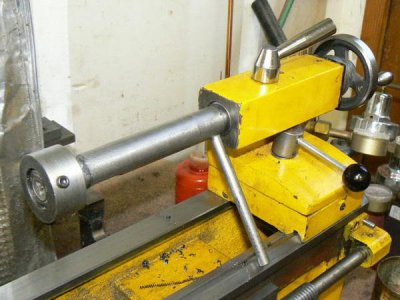- Joined
- Feb 6, 2015
- Messages
- 45
Hey guys, this is my first post other than my intro post so please forgive me if I ask anything stupid. I bought a lathe yesterday, it needs a little cleaning up but it runs and seems true. It's a Craftsman 101.07301. From what I've found on the internet this seems to be equivalent to an Atlas 618 Mk1. It came with a steady rest (missing 1 finger), 2 four-finger chucks, a 3-finger chuck (installed), a face plate (what do I use that for?), a drill chuck that looks too large to be used with this lathe, a set of micrometers and a few wrenches. There are no change gears or other tooling included.
The problems I've found with it are the bull gear teeth are chipped (looks like somebody tried to engage the back gears while running), the crank handles on the cross-slide need replacing (one broken, one missing) and someone replaced the tool holder tower bolt with one that doesn't look correct. Also, the tool holder tower (is that the right word?) seems loose, is there a way to tighten it?
I am planning to clean it all up, paint it and attach it to a sturdy metal table in my garage. I know I'll probably have to find the bull gear, crank handles and change gears on eBay. Are there any other possible sources? What change gears would I need for most workshop applications? I would like to be able to thread.
What else do I need to begin using this lathe? I assume at a minimum I'll need some tool holders and tools. Are there generic tool holders that will fit? Can anyone recommend a list of startup tooling?
Is there a downloadable owner's manual available?
I would also like to have a milling attachment. I've seen the M6-500 attachments for sale online, and I've also seen mention of a collet-type milling bit holder that was apparently available for the lathe, is the bit holder necessary or could a milling bit be chucked in a lathe chuck?
Pictures attached. Thanks in advance for any advice.
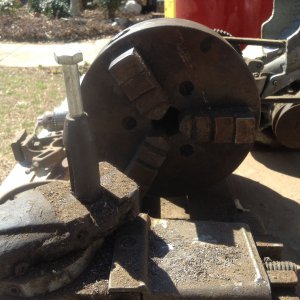
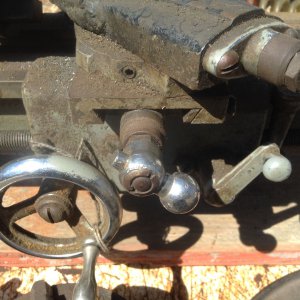
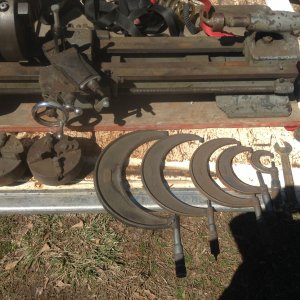
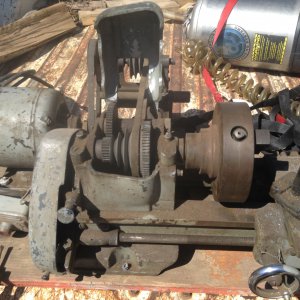
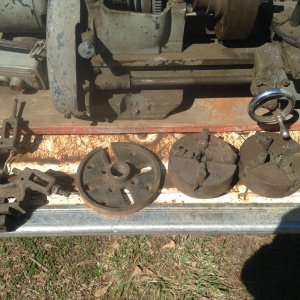
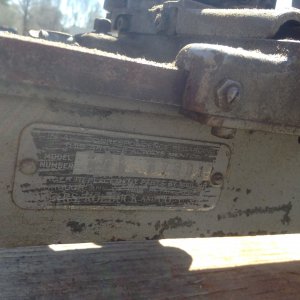
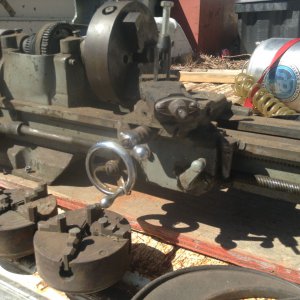
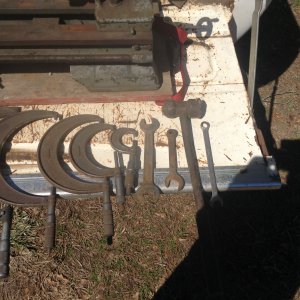
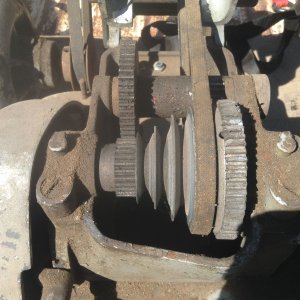
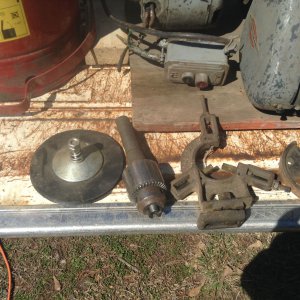
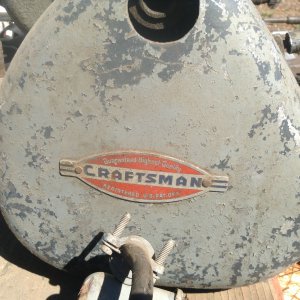
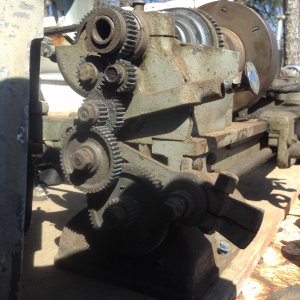
The problems I've found with it are the bull gear teeth are chipped (looks like somebody tried to engage the back gears while running), the crank handles on the cross-slide need replacing (one broken, one missing) and someone replaced the tool holder tower bolt with one that doesn't look correct. Also, the tool holder tower (is that the right word?) seems loose, is there a way to tighten it?
I am planning to clean it all up, paint it and attach it to a sturdy metal table in my garage. I know I'll probably have to find the bull gear, crank handles and change gears on eBay. Are there any other possible sources? What change gears would I need for most workshop applications? I would like to be able to thread.
What else do I need to begin using this lathe? I assume at a minimum I'll need some tool holders and tools. Are there generic tool holders that will fit? Can anyone recommend a list of startup tooling?
Is there a downloadable owner's manual available?
I would also like to have a milling attachment. I've seen the M6-500 attachments for sale online, and I've also seen mention of a collet-type milling bit holder that was apparently available for the lathe, is the bit holder necessary or could a milling bit be chucked in a lathe chuck?
Pictures attached. Thanks in advance for any advice.














